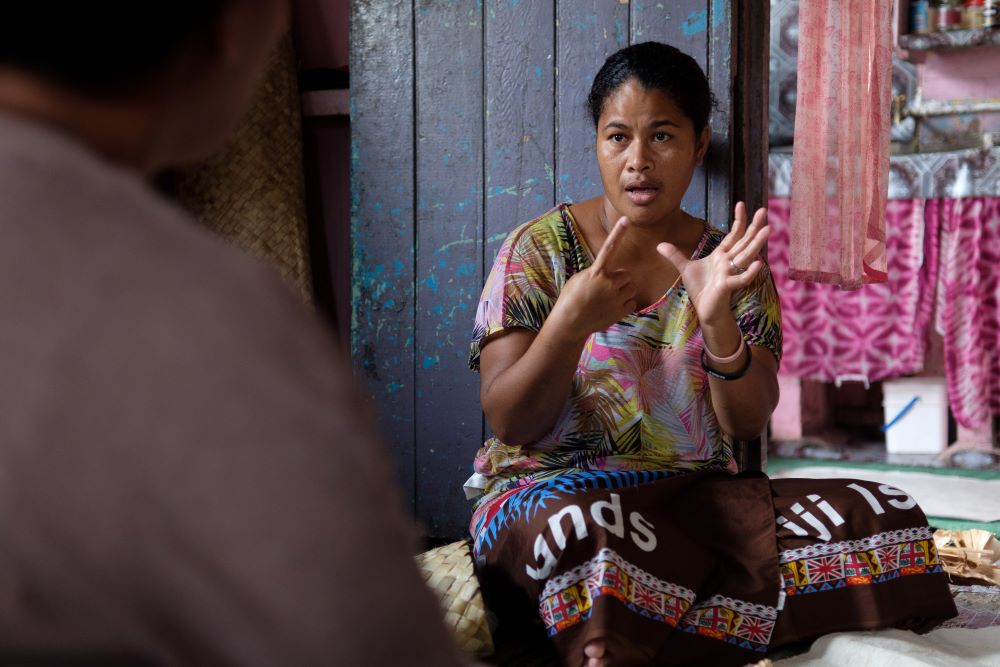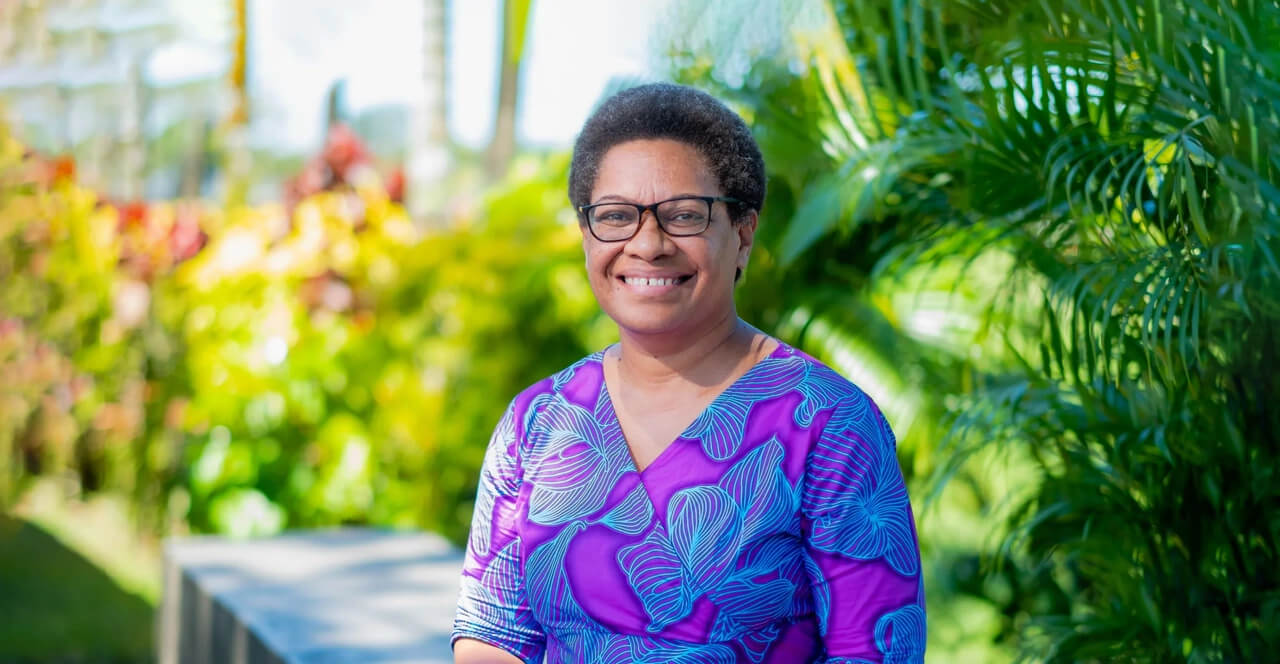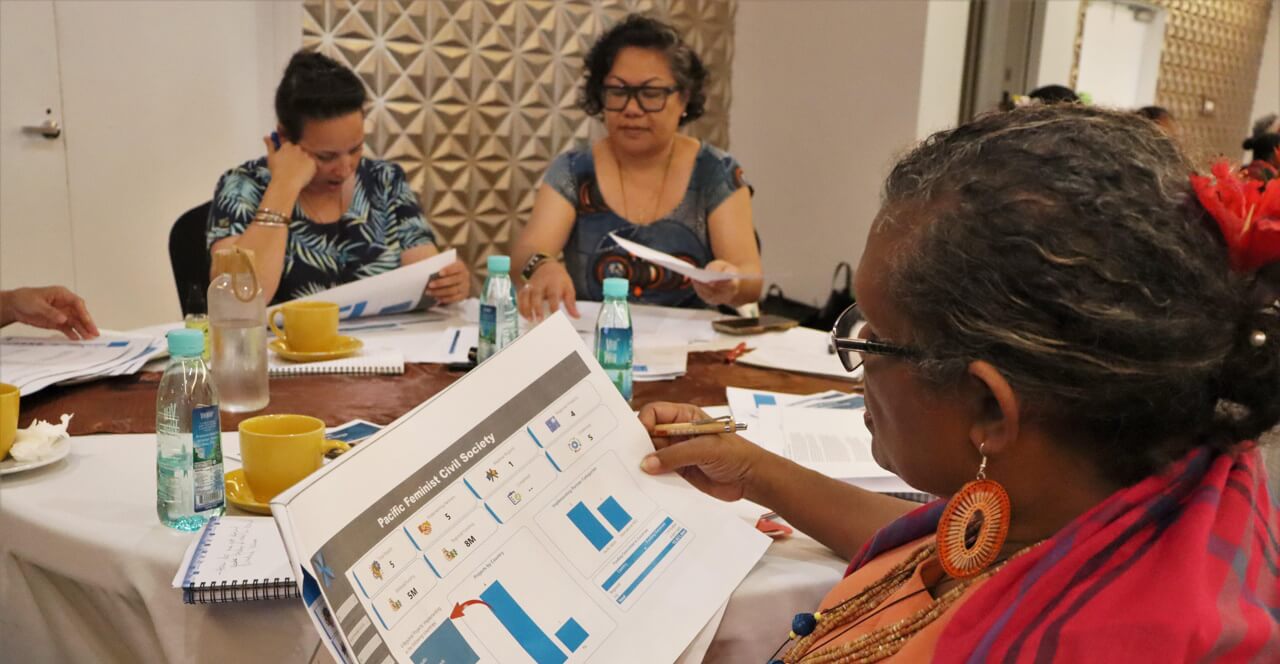Making Disability Data Collection Simple: A Guide to using the Washington Group Short Set
24 June 2024By Sally Baker
Collecting data on disability is a vital step in creating inclusive initiatives that seek to truly benefit everyone.
For Pacific Women Lead and its partners, understanding the unique situation and experiences of women and girls with disabilities helps in developing transformative approaches and strategies. Comprehensive data helps us understand the situation of people with disabilities more clearly. We can identify barriers, tailor interventions to address these, and track progress toward equity and inclusion.
As outlined in our previous blog, PWL is committed to monitoring our contribution towards the achievement of disability equity and rights by reporting on:
- Preconditions: The supports which enable participation by people with disabilities,
- Inclusion: The number of people with disabilities involved in activities, and
- Participation: The experiences and outcomes of people with disabilities.
Reporting on inclusion requires us to first gather data and second use the disability-disaggregated data effectively. One way to do this is by using the Washington Group Short Set (WGSS).
Why the WGSS works
The Washington Group Short Set is a simple yet powerful tool comprising of 6 questions that explore functional abilities including seeing, hearing, walking, understanding, self-care and communicating. It is widely recommended for its effectiveness because it does not identify health problems, but rather captures the impact of these on functional abilities. The questions identify disability without relying on medical diagnosis, which is unavailable in many Pacific counties. The WGSS also avoids the stigma associated with disability terminology. Using the WGSS allows us to collect information and understand the different experiences of people with diverse functional difficulties.
PWL has released another Guidance Note to support its partners with the use of the WGSS to enable disability inclusion. and offers practical tips on using the WGSS in a Pacific context.
For example, asking straightforward questions might seem like the obvious approach when it comes to gathering data, but when it comes to collecting disability data, more nuanced approaches are required. Questions such as “Do you have a disability?” or “What type of disability do you have?”, often result in under-reporting due to stigma or misunderstanding. Instead, the WGSS uses functional questions that allow individuals to self-report on what they can do, and what they find difficult. It captures their experiences completing everyday activities such as seeing, walking, hearing, understanding, self-care, and communicating.
Response options range from “no difficulty” to “cannot do at all.” People who report significant functional difficulties are more likely to experience disability.
What can we do with disability data?
Monitor reach
Data collected using the WGSS opens possibilities for understanding and enhancing inclusivity. Collecting disability information allows organisations to both report on and monitor the extent to which they have reached people with disabilities, or included people with disabilities in activities. For example, collecting disability data enables programs to report on the number and proportion of participants who experience disability, and how participation rates change over time.
Remove barriers
Identifying disabilities assists implementers move closer to removing participation barriers, and enabling the achievement of outcomes by people with disabilities. Barriers include:
- Attitudinal: Negative attitudes or discrimination.
- Environmental: Inaccessible built environments.
- Institutional: Discriminatory laws and practices.
- Communication: Inaccessible information.
Using the WGSS provides us with information about participants who experience disability. We can use this to follow up and discuss barriers to participation experienced by people with disabilities. This assists in the pinpointing of exclusionary factors, and identification of the supports necessary for full inclusion and participation.
Monitor diversity
Disability is diverse. People with varied difficulties experience barriers differently. Disaggregating responses to the WGSS allows implementers to understand and monitor the participation of people with diverse disabilities. For example, this process sometimes results in programs finding that while participation of people with mobility and vision difficulties is high, engagement of deaf and hard of hearing people is limited. As a result, a program might make adjustments to their work to try to more effectively engage with and involve people with less represented disabilities.
Collecting and utilising disability data is a small but vital step in ensuring everyone, can fully participate in and benefit from PWL-supported initiatives. Disability data can help us create inclusive programs and monitor them too. Embracing the WGSS can make a real difference in the lives of people with disabilities, ensuring they can thrive in every aspect of our programs.



